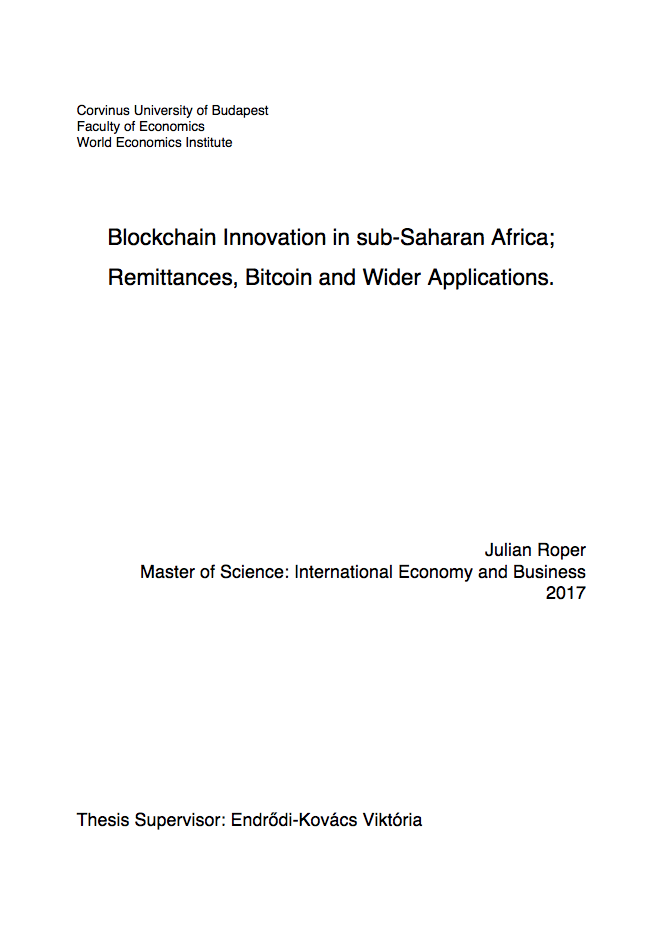
Read here / Download / Read here / Download / Read here / Download / Read here / Download / Read here / Download / Read here / Download / Read here / Download / Read here / Download / Read here / Download / Read here / Download / Read here / Download / Read here / Download / Read here / Download / Read here / Download /
Blockchain Innovation in sub-Saharan Africa; Remittances, Bitcoin and
Wider Applications. (2017)
In 21st Century sub-Saharan Africa (SSA) the costs of remittance in SSA are the highest in
the world, and have been so for decades. Additionally, the total amount sent back home to
SSA is greater than total foreign aid that the region receives.
In 21st Century sub-Saharan Africa (SSA) the costs of remittance in SSA are the highest in
the world, and have been so for decades. Additionally, the total amount sent back home to
SSA is greater than total foreign aid that the region receives.
The recent adoption of mobile phones has reduced isolation within SSA, introducing the
remittances innovation of mobile banking; allowing users to send and receive money via their
mobiles, which have had strong measureable affect on redistributing income and lowering the
costs of remittance within SSA. A prime example of a technological solution to institutional
problems while showing how formal/conventional institutions can be bypassed effectively.
However, mobile money providers such as M-Pesa are not without criticism of
monopolisation and anti-competition culture.
Blockchain, a general term for decentralised transparent ledger systems (DTLS), has recently
begun to be implemented within many areas, from cross-border payment solutions to internal
auditing, and by large banks in developed economies to small start-ups in developing
economies. In contemporary times it has been flaunted as tool for utopia, solving institutional
issues with smart contracts to trust-less transparent voting. However, its more modest origin
is within the cryptocurrency Bitcoin, as its public decentralised transparent ledger, utilised to
solve double counting and other issues usually handled by intermediaries allowing it to run
without a central authority or regulator. Blockchains in their technological nature are capable
of providing immutability, transparency, decentralisation (therefore durability), and faster
transactions due to aforementioned factors partially due to the lack of intermediary reliance.
Therefore, digital currencies and financial ledgers are theoretically able to provide cost
savings while also introducing elements of transparency and efficiency.
The aim of this thesis was therefore to explore and emphasise the possible implementations,
effects and limitations that blockchain technology could have within the remittances market
of sub-Saharan Africa. Additionally, it looks at current and potential implementations of
blockchain technology within SSA from a wider perspective. The primary hypothesis was
that the largest immediate effect of blockchain implementation will be through financial
innovation, primarily by lowering of remittance costs (in both speed and price).
Julian Roper is an interdisiplinary artist with works in audio, visual and written fields.
↓
Julian@TheAtlas.co
+33 7 66 82 98 07 FR